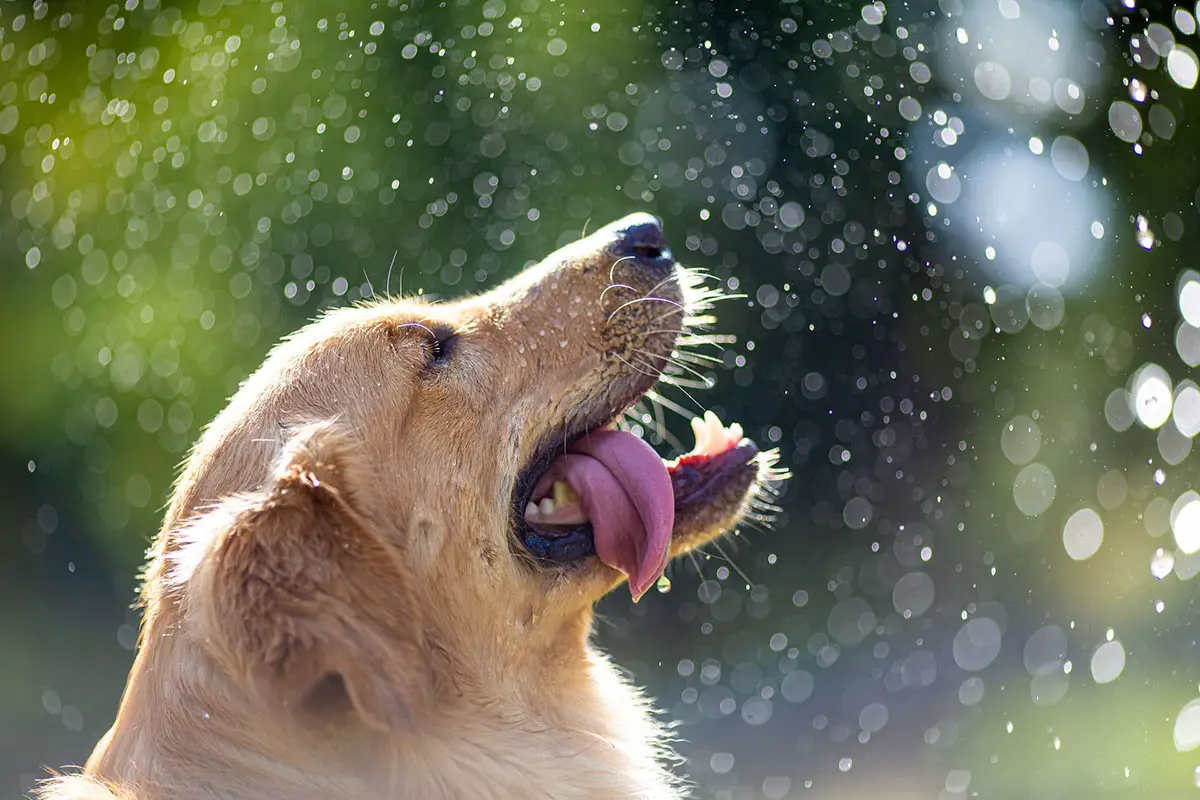Health Benefits of Dog Massage
Massage isn’t just about pampering your pup; it provides real health benefits that can improve their quality of life. Let’s explore the key advantages:
Stress and Anxiety Relief
Dogs, like humans, experience stress and anxiety. Changes in routine, loud noises, or separation from their owners can all trigger nervous behavior in dogs. Massage offers a natural solution to help soothe your dog’s nerves. By engaging in gentle, rhythmic strokes, you can calm their nervous system, releasing endorphins (the body’s natural painkillers and mood boosters).
Massage is especially beneficial for dogs with separation anxiety or for those who become anxious during thunderstorms, fireworks, or car rides. Regular massage sessions can make a noticeable difference in your dog’s overall demeanor, making them calmer and more relaxed in stressful situations.
Pain Management and Injury Recovery
For dogs suffering from chronic pain or recovering from an injury, massage can be a crucial part of their healing process. Whether your dog is dealing with arthritis, hip dysplasia, or muscle strains, a well-placed massage can ease discomfort, reduce inflammation, and improve mobility.
Massage stimulates blood flow, which promotes the healing of damaged tissues. For dogs with joint issues or arthritis, massage can help loosen up stiff joints, providing relief and enhancing mobility. By carefully massaging the affected areas, you can also reduce muscle tension that often results from compensating for an injury or ailment.
Improved Circulation and Flexibility
Just as massage helps boost circulation in humans, it works similarly for dogs. Improved blood flow means better oxygenation of the tissues, which aids in detoxification and helps nutrients reach cells more efficiently. This is particularly important for senior dogs or dogs with low activity levels, as it can enhance their overall vitality.
In addition to better circulation, massage helps maintain your dog’s flexibility. Regular massages can reduce the buildup of lactic acid, preventing muscle soreness and stiffness, which is vital for dogs who are very active or participate in sports like agility or flyball.
Types of Dog Massage Techniques
There are several massage techniques that are commonly used on dogs. Each method has its own set of benefits, and when used correctly, they can help target specific health concerns. Let’s go over the most popular techniques:
Effleurage (Light Stroking)
Effleurage is a gentle stroking technique where you use long, smooth strokes along your dog’s body. It’s typically used at the beginning of a massage to warm up the muscles and at the end to calm and relax your pet. This method helps promote circulation and is excellent for soothing anxiety.
To perform effleurage, start at the head and gently stroke down your dog’s back in long, sweeping motions. Keep your hand relaxed, and maintain gentle but firm pressure.
Petrissage (Kneading)
Petrissage involves kneading the muscles and is a more intense technique than effleurage. It’s designed to release muscle tension and improve circulation deep within the tissues. Petrissage can be particularly helpful for dogs with muscle stiffness or soreness.
To perform petrissage, use your fingers and thumbs to gently knead your dog’s muscles in circular motions. Focus on the larger muscle groups, such as those in the shoulders, thighs, and hips.
Passive Touch
Passive touch is a technique that involves placing your hands lightly on specific areas of your dog’s body without movement. This can help reduce anxiety and create a sense of calm, as it allows your dog to feel your presence without any pressure or manipulation.
You can use passive touch by gently resting your hands on areas like your dog’s back or chest for several moments, allowing them to become accustomed to your touch before moving on to other massage techniques.
Compression Massage
Compression massage involves applying gentle pressure to your dog’s muscles, then releasing it. This technique can stimulate circulation and help relieve tension, particularly in dogs that suffer from muscle pain or stiffness.
To perform compression massage, use your palm to press down gently on your dog’s muscles, hold for a few seconds, and then release. Be sure to avoid sensitive areas like joints or bony regions.
How to Massage Your Dog at Home

Massaging your dog at home is a great way to bond while providing therapeutic benefits. But to ensure you’re doing it correctly, you’ll need to follow some basic steps.
Preparing Your Space
Before you begin, make sure you have a calm, quiet space where your dog feels comfortable. Soft lighting, soothing music, and a comfortable surface (like a soft blanket or cushion) can help your dog relax. Avoid any loud noises or distractions that might make your dog anxious.
It’s also essential to be mindful of your dog’s mood. Never try to massage a dog who is agitated or overexcited. Wait until they are calm or tired, which will make them more receptive to your touch.
Step-by-Step Guide
- Start with Gentle Strokes: Begin by using effleurage strokes to get your dog accustomed to your touch. Start at the top of their head and work your way down their back. Keep your movements slow and smooth.
- Focus on Specific Areas: After warming up the muscles, use petrissage to focus on any areas that seem tense or stiff. Knead the muscles gently, paying attention to your dog’s body language. If they seem uncomfortable or pull away, ease up on the pressure.
- Use Compression on Sore Muscles: For dogs with specific muscle soreness, use compression massage by applying gentle pressure and then releasing. This can help improve circulation and relax the muscles.
- Passive Touch for Calming: If your dog is anxious or restless, use passive touch by placing your hands on their chest or back for several seconds without moving. This allows them to feel your presence and can help calm them down.
- End with Effleurage: Finish the massage with more effleurage strokes to relax the muscles and bring the session to a soothing close. This will help your dog associate the massage with positive feelings.
When to Avoid Dog Massage
While massage is generally safe, there are times when it’s best to avoid it or consult a professional first.
Signs Your Dog Doesn’t Want a Massage
Not all dogs enjoy massage, and it’s important to recognize when your dog isn’t in the mood. If they show signs of discomfort, such as pulling away, growling, or stiffening up, it’s best to stop and try again later. Never force a massage if your dog isn’t interested.
Health Conditions Requiring Caution
Certain health conditions may require you to avoid or modify your massage techniques. For example, dogs with open wounds, recent surgeries, or infections should not be massaged around the affected areas. If your dog has a condition like cancer, consult your vet before attempting any massage.
Dogs with arthritis or hip dysplasia may benefit from massage, but it’s crucial to be gentle and avoid placing pressure on sore joints.
Using Dog Massage to Enhance Bonding
One of the most rewarding aspects of giving your dog a massage is the emotional bond it helps strengthen between you and your pet. Dogs thrive on physical contact and often associate touch with love and security. Through massage, you provide not only physical relief but also an experience that fosters trust and connection.
Massage offers a perfect opportunity for mindful interaction, allowing you to focus on your dog without distractions. This can be especially important for rescue dogs or newly adopted pets who may still be learning to trust their new environment. Over time, regular massages can create a positive routine that your dog looks forward to, deepening the bond you share.
Tools and Products to Improve Dog Massage

While your hands are the most important tools for dog massage, there are various products available that can enhance the experience. Here are a few tools worth considering:
- Massage Oils: Special dog-friendly massage oils can help reduce friction, making the massage smoother and more comfortable for your pet. Look for oils that contain natural ingredients like lavender or chamomile, which have calming effects on dogs.
- Massage Gloves: These gloves come with textured surfaces that help stimulate your dog’s skin and muscles, providing a deeper massage while protecting your hands. They’re also great for brushing and removing loose fur.
- Massage Rollers: These handheld tools are designed to roll over your dog’s body, offering gentle yet consistent pressure. They’re particularly useful for larger dogs, as they allow you to cover more area without straining your hands.
- Heating Pads: Warming up your dog’s muscles before a massage can improve blood flow and make the experience more relaxing. Heating pads or warm towels can be used to gently heat the muscles before starting the massage.
Common Mistakes to Avoid When Massaging Your Dog
While dog massage is beneficial, there are a few common mistakes that pet owners should avoid to ensure their dog’s comfort and safety:
- Using Too Much Pressure: Dogs have sensitive muscles and joints, especially smaller breeds or older pets. Applying too much pressure can cause discomfort or even pain. Start with light pressure and gauge your dog’s reaction before increasing intensity.
- Ignoring Your Dog’s Body Language: It’s important to watch for signs that your dog may not be enjoying the massage. If they pull away, whine, or seem uncomfortable, it’s time to stop or adjust your technique.
- Massaging Injured Areas Without Caution: While massage can aid in recovery, it’s essential to be cautious when massaging areas around an injury. Applying pressure to an injured or sore area without proper care can worsen the condition. Always consult your vet before massaging a dog recovering from injury or surgery.
- Rushing the Process: Dogs need time to relax and feel comfortable during a massage. Rushing through the process can lead to stress or anxiety, defeating the purpose of the massage. Take your time, use slow, rhythmic strokes, and allow your dog to guide the pace.
Massage Techniques for Specific Breeds
Different dog breeds have different physical needs, and your massage techniques can vary depending on the size, activity level, and common health issues of your dog’s breed.
- Large Breeds (e.g., Golden Retrievers, German Shepherds): Large dogs are often prone to joint issues like hip dysplasia. Focus on the back, hips, and legs using deep, slow strokes. Compression massage can help with muscle soreness, especially for active dogs or working breeds.
- Small Breeds (e.g., Dachshunds, Chihuahuas): Small breeds may suffer from delicate joints or back problems, such as intervertebral disc disease. Use light pressure and avoid the spine unless advised by a vet. Effleurage and passive touch work well for smaller dogs.
- Sporting Breeds (e.g., Border Collies, Australian Shepherds): High-energy breeds can benefit from muscle recovery after physical activity. Focus on massaging the legs and shoulders, using a combination of petrissage and compression to alleviate muscle tension.
- Brachycephalic Breeds (e.g., Pugs, Bulldogs): These breeds often experience breathing difficulties. Be cautious when massaging around the chest and throat areas. Stick to light strokes around the shoulders and back to help improve circulation without placing pressure on their breathing.
Professional Dog Massage: When to Seek an Expert

In some cases, a professional dog massage therapist may be the best option, especially if your dog has specific health concerns or injuries. Professional therapists are trained in advanced techniques that target specific areas of discomfort and can help with injury rehabilitation.
If you notice that your dog is consistently experiencing pain or stiffness, or if they are recovering from surgery, seeking a professional may provide them with the specialized care they need.
Conclusion
Dog massage is more than just a luxury—it’s a way to improve your pet’s physical and emotional well-being. From reducing anxiety to aiding in pain management, the benefits of regular massage can lead to a happier, healthier dog. By learning simple techniques and making massage a part of your routine, you’ll not only strengthen the bond with your pet but also enhance their overall quality of life.
Whether you choose to massage your dog at home or seek the help of a professional, the positive effects of massage are undeniable. So why not give your furry friend the gift of relaxation and relief? You’ll both reap the rewards!





